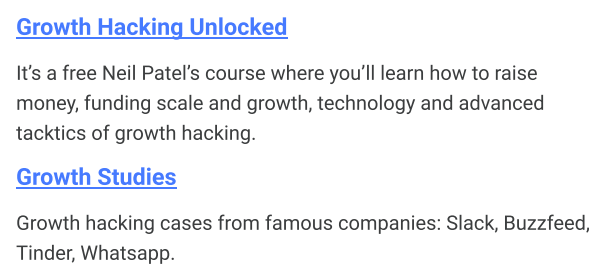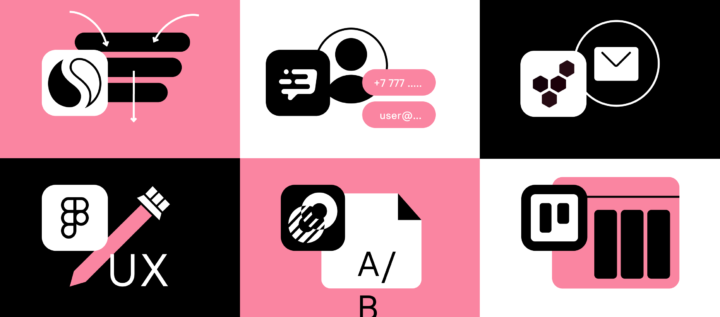How to Ensure Continuous Growth Hacking

Previously, we’ve talked about what growth hacking is, what it means to experiment, how to build up a growth team, and how to start a hypothesis pipeline.
Today, we’re diving deeper into growth hacking but with more emphasis on the practical aspect. How do you make sure everything works right? By “right” we mean that the growth team continuously generates, prioritizes, tests hypotheses, and executes successful ones. That’s where The Startup Growth Pyramid suggested by Sean Ellis kicks in.
Sean Ellis coined the term “Growth Hacking” back in 2010. He strived to build up a team responsible for identifying growth areas in a company. Marketers didn’t fit this requirement and didn’t understand what was required of them to do.
Test growth hypotheses quickly and without developers with Dashly

Growth hacking success stages
So, what does it take to grow manyfold? In his Startup Growth Pyramid, Sean Ellis elaborated on the growth hacking success stages.

The well-established Product/Market Fit is the basis of successful growth hacking. In other words, it’s the value of your product for users. If no one cares about your product, no hacks will help you grow manyfold; neither free product offering nor a lifetime-free product.
Note: all stages of the pyramid are interrelated. You can’t proceed to the second and third stages without the PMF and vice versa.
The next stage implies research that will allow for growth scaling. This stage is also called “Stacking the Odds” by the growth hacking community. At this stage, you want to find out who your users are and why they use your product.
What kind of research? From the AARRR funnel and Lean Canvas to creating CJM and developing Job Stories. Research helps understand your users better, sheds the light on bottlenecks, and produces new hypotheses ideas.
Now that we have the PMF on our hands and we know everything on our customers, we can move on to scaling growth. We’re going to hack growth via hypotheses testing processes.
Tools for Growth opportunities research
Tools help growth teams work more efficiently and generate more high-quality hypotheses. But these tools weren’t invented by growth hackers. They are used to improve the quality of company operations, not just to test hypotheses.
Hypotheses coming from your head are bad. You should always rely on research.
Thanks! Here’s your copy of 50 growth hacking tools
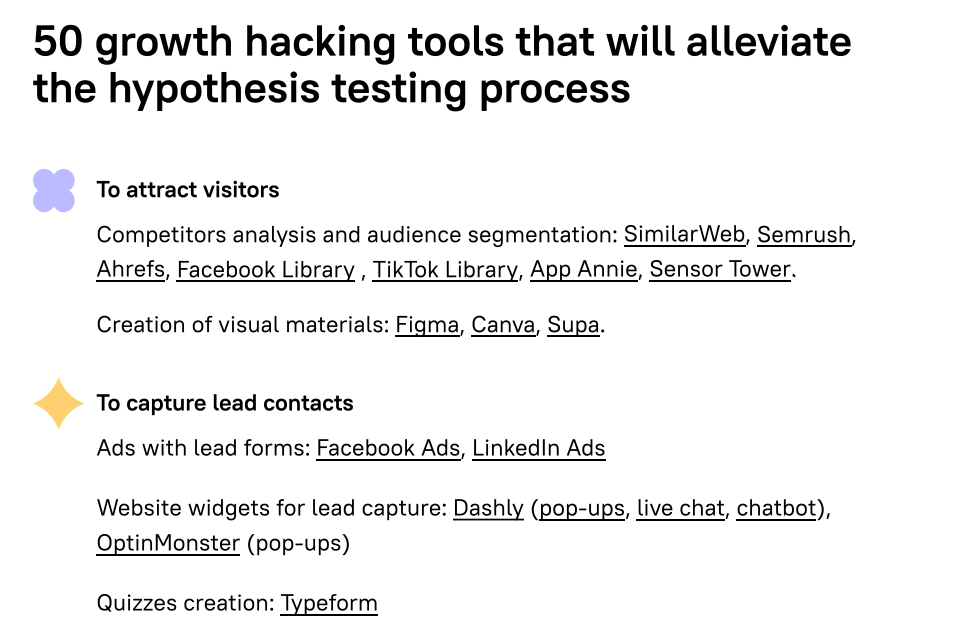
The AARRR funnel
The AARRR funnel allows for comprehensive testing. Marketers often concentrate solely on the acquisition, while product managers do the rest of the job. If that’s the case, hypotheses are tested in a chaotic manner and that’s inefficient.
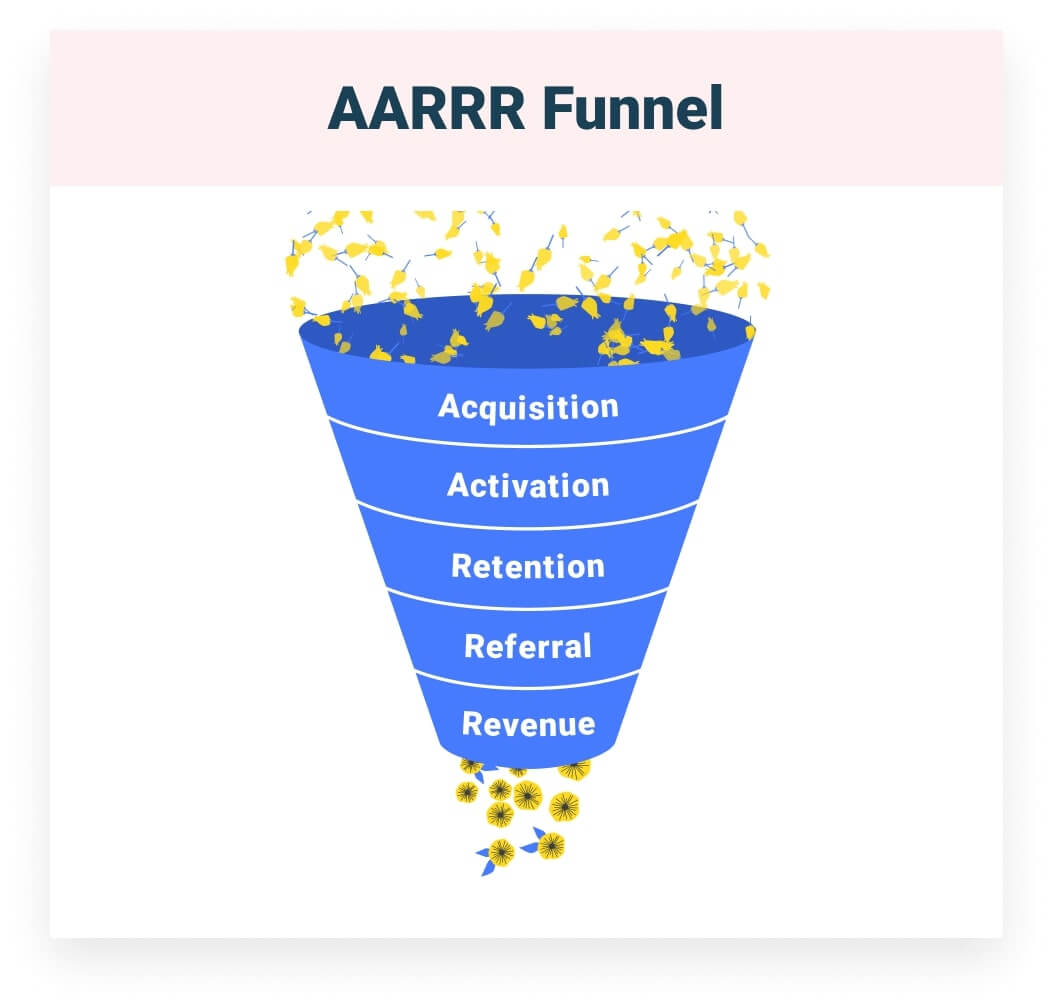
Building a funnel will help you decompose user interaction into stages and conduct experiments throughout the funnel.
At the acquisition stage, you test the acquisition hypotheses. One of your objectives here is to increase the conversion rate of your lead generation. When it comes to activation, you experiment with user experience within your product. It’s essential to recognize the “wow moment” of your customer. As you move along the funnel, test hypotheses on each stage. If you don’t have sufficient traffic at the retention stage, test a hypothesis one level up at the activation stage.
Lean Canvas
This tool helps you look at the product from a strategy perspective and it helps the team locate growth areas beyond the product.
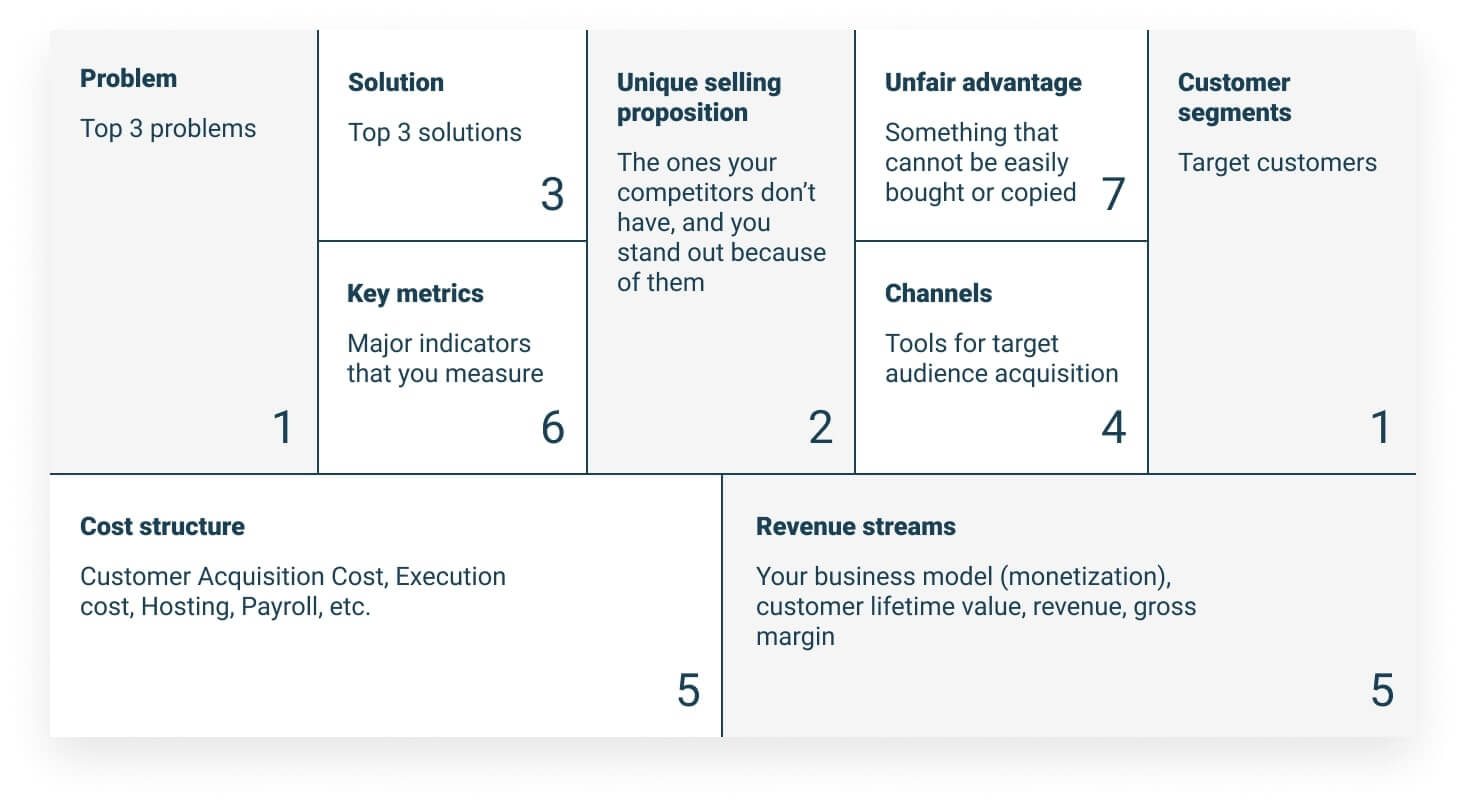
Customer Journey Map
Mapping the customer journey will help identify product bottlenecks and test hypotheses in these areas.
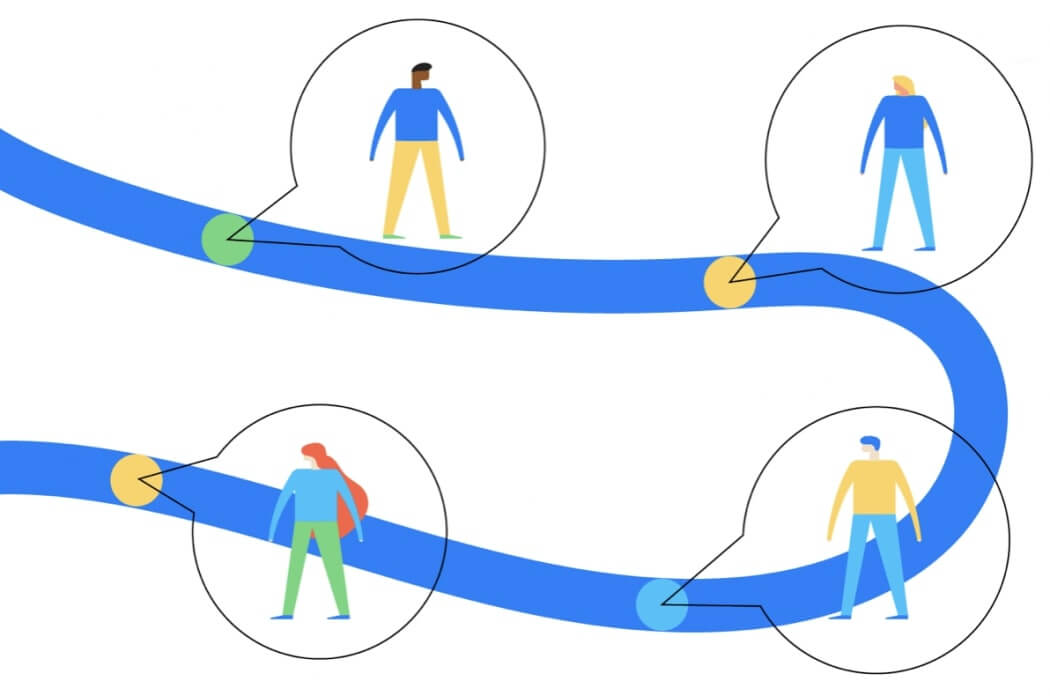
JTBD
Thanks to the “Job” framework, you can make higher quality hypotheses with more emphasis on the true product value for your users.
Always proceed with regard to the values and tasks of your customers.
This is not an exhaustive list of research mechanics. It’s rather a very small toolkit for a quality test of hypotheses. Remember this:
If you don’t test your value, it’s worth nothing.
Thanks! Here’s your copy of the growth strategy template
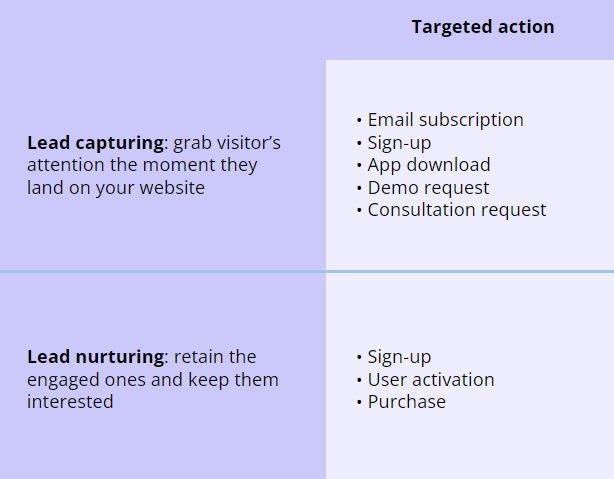
Arranging continuous hypotheses testing
Growth hacking happens in four stages: hypotheses generation, backlog prioritization, testing, data collection, and analysis. The cycle goes on and on until you hack your growth. Boom!

Hypotheses generation
Well, let’s say you have a growth dream team or at least one cool growth hacker. It’s high time to jump into action and start generating hypotheses ideas.
User research yields major hypotheses ideas. The more research you do, the more quality experiments you run.
Here’s a hypotheses generation checklist you can use:
- Create a backlog where you’ll put your hypotheses ideas;
- Note at which stage of the AARRR funnel you’re testing your hypothesis;
- Specify anticipated results;
- Specify metrics impacted by your hypothesis;
- Formulate your hypothesis as “If _____, then _____”.
Let us give you one piece of advice. Engage the whole team into generating ideas as this will allow for gathering a lot of hypotheses. You’ll even have the ones that your growth team could never think of. One support agent knows everything about difficulties your customers face; sales reps know what customers expect at the beginning of the funnel.
This is what Dashly’s growth team board looks like:
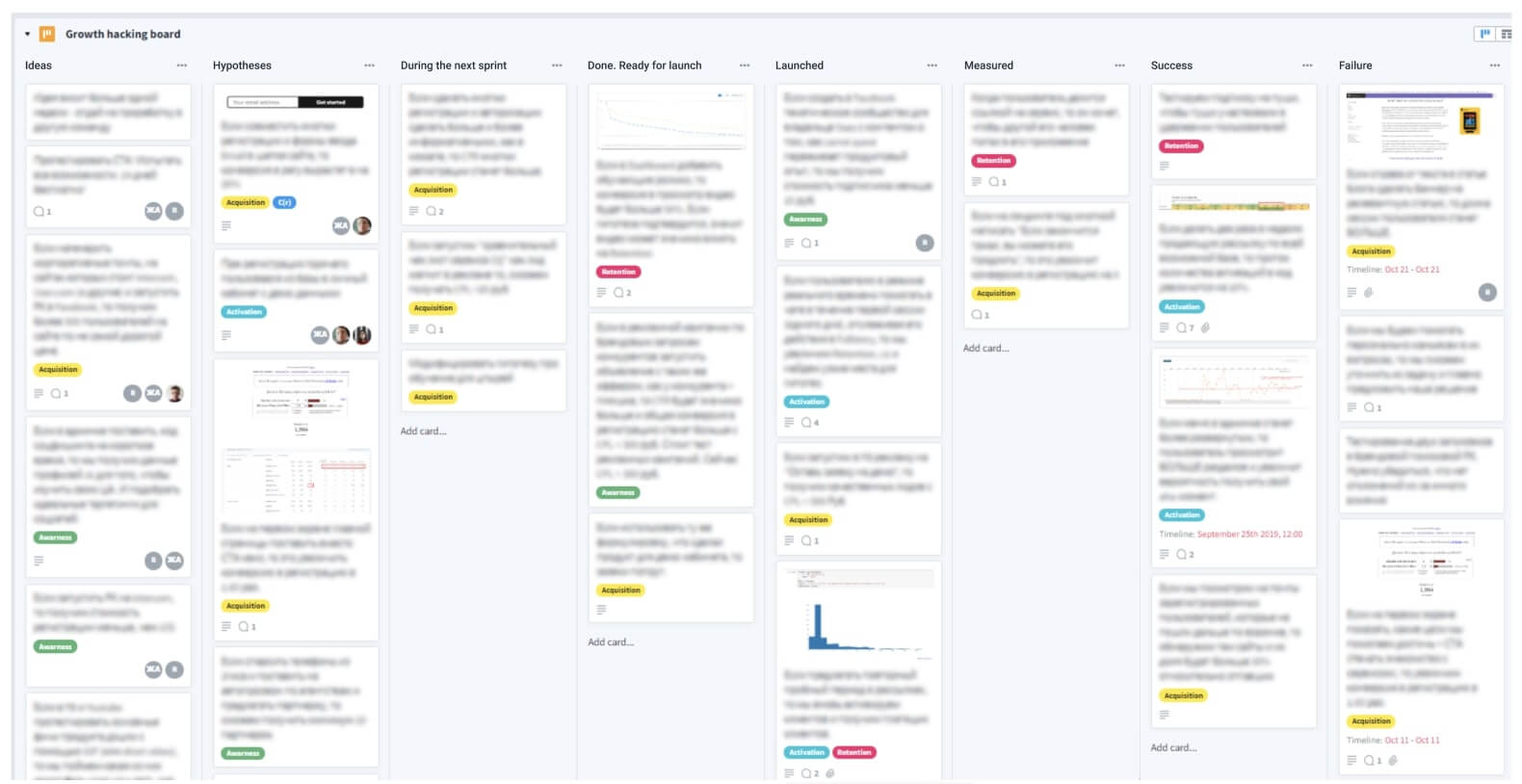
Our Growth team puts down all hypotheses ideas in Favro and tags them depending on the funnel stage. After a growth meeting, we pick hypotheses and design our sprint.
A perfect growth meeting lasts for an hour. You allow 30 minutes to discuss or pitch ten hypotheses, five minutes to prioritize them, ten minutes to discuss past experiments, and 15 minutes to reflect back.
Let’s say we’re working in one growth team in a company innovating in ecology. One of our products is a sharing platform for anything: cars, furniture, light bulbs, appliances, etc. It works like carsharing but with any objects. Suppose we need to test the first stage of our funnel and generate hypotheses ideas for the acquisition stage.
We’ve discussed our ideas at a growth team meeting and aligned on the list:
- If we augment the signup button, the CTR will grow by 1,6 times;
- If we run social media posts, the number of signups will increase by 30%;
- If we offer a three-month free plan for an HD TV and a robot vacuum cleaner, a user will extend their plan for one more year;
- If we state “Share, save money, invest in your impressions, save nature” on our landing page, we’ll improve the conversion rate to signup by 1,7 times;
- If we publish photos of houses and apartments with shared new appliances, the conversion rate to signup will double.
Now it’s time to pitch our ideas and prioritize them.
Backlog prioritization
After we generated hypotheses and backlogged them, it’s time to prioritize and analyze them.
The whole Growth team should engage in prioritization, not just one person. This will help take on more quality hypotheses and backlog non-urgent or questionable ones.
Don’t make a shit storm out of prioritization discussion. A growth master should cut them out in stark terms.
To prioritize correctly, evaluate how fast you can run a hypothesis, how much time you need to test it, and how much it will influence your growth.
The ICE Score (Impact, Confidence, Ease) method can help you prioritize hypotheses. You can identify a possible impact on a particular metric, ease of execution, and your confidence in a hypothesis.
After you prioritize hypotheses, pick the ones you’re going to test during your next sprint.
Let’s get back to our eco-friendly sharing platform.

When prioritizing hypotheses, keep in mind the expected results, the metric it’s going to influence, and that execution should not take longer than six hours.
After we’ve prioritized hypotheses by the ICE framework, we pick the ones with the highest scores and include them in the sprint, and the rest remain in our backlog waiting for our next iteration.
Copywriting and photos on a landing page and a free plan got the highest scores; that’s what we’re going to execute this time. Remember this: the more quality hypotheses you test, the bigger your prospects of success are.
Experiments
We’re running hypotheses at this stage: developing landing pages, running A/B tests, reformulating our offers, modifying the user journey during a session, and so on.
It’s important to allow a clearly limited time for a hypothesis launch. This will help you avoid procrastination and test more hypotheses.
No hypothesis needs over six hours for execution. If it does, it’s bad.
After launch, you can spend as much time on data collection as is required: one day, a week, or a month.
Thanks! Here’s your copy of 100 growth ideas
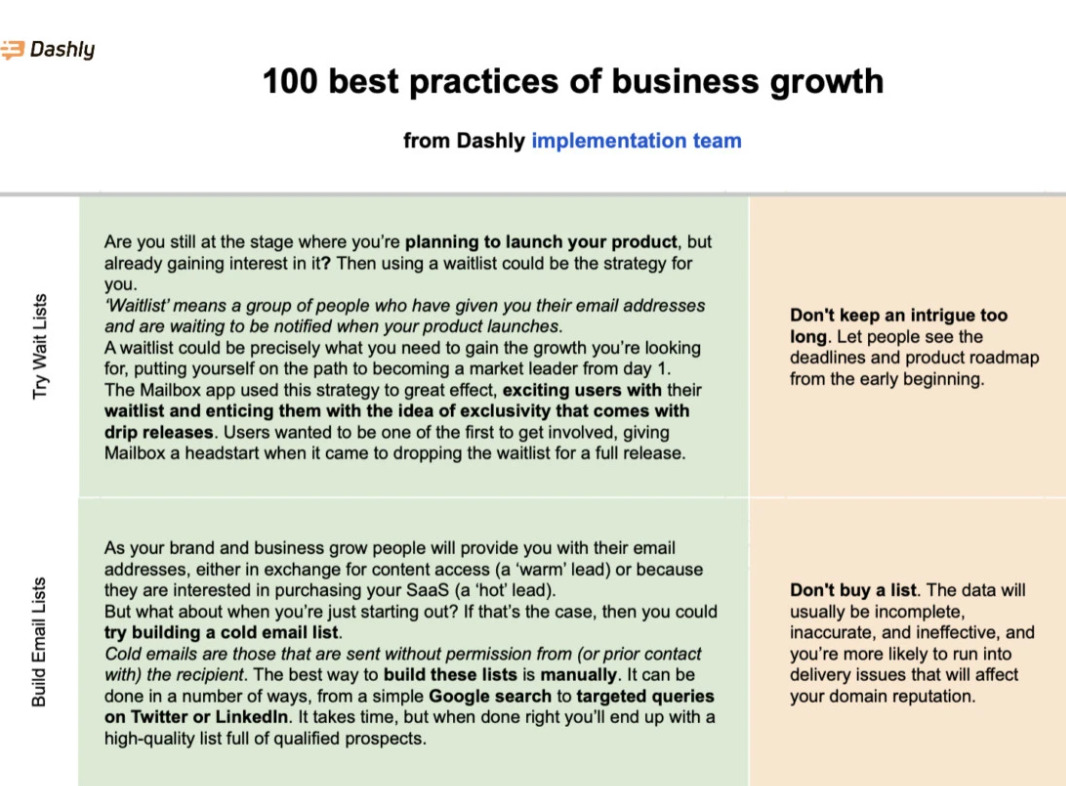
At this stage, we’re executing three hypotheses. We’re updating headings and photos on our landing page and setting up a free plan. What’s next?
Data collection and analysis
When all experiments and tests are done, put down all takeaways in one document. The better organized it is, the easier it’ll be for you to see where you’re going next. A well-structured document will help you avoid testing the same hypotheses.
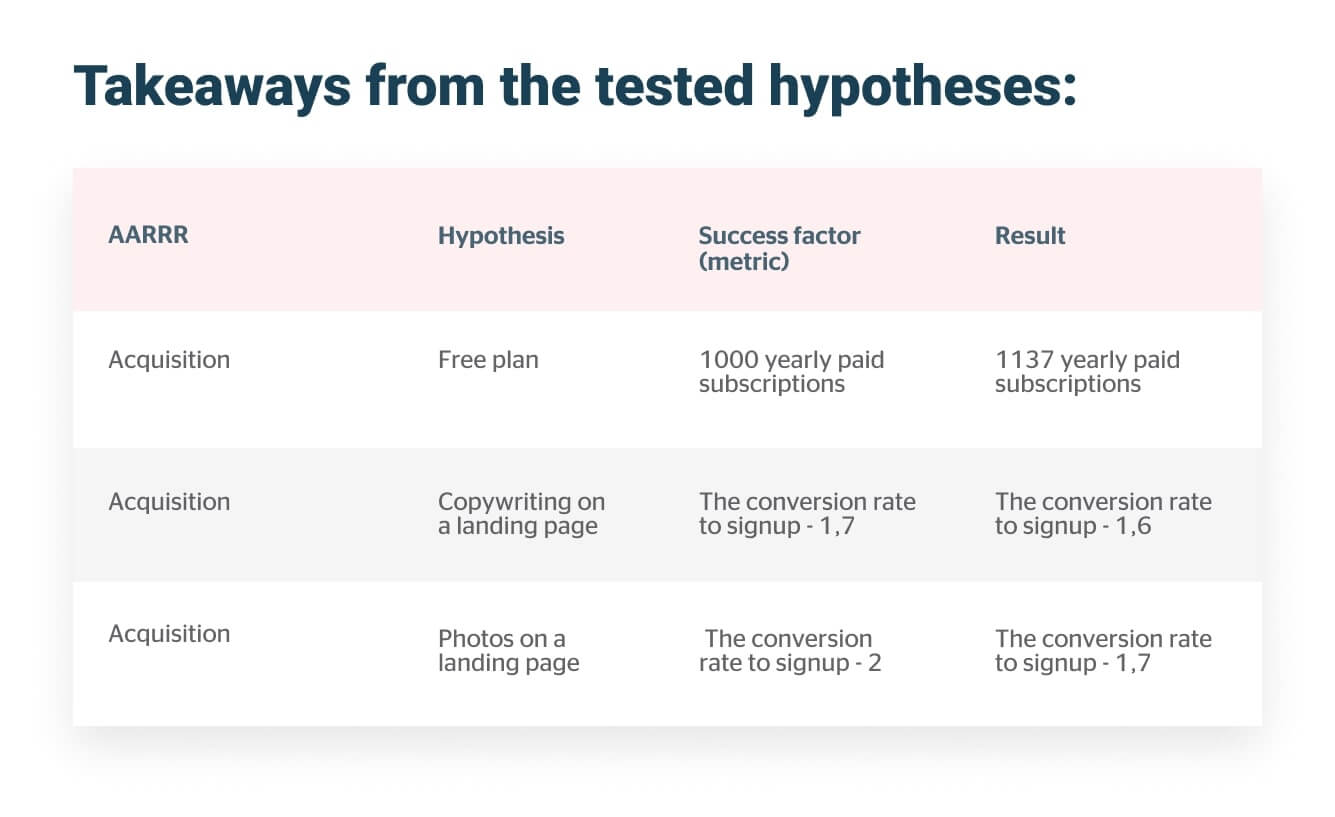
Thanks to our tests, we know a free plan brings great results, and changes on a landing page don’t really change the picture. We should work out our free plan within the product itself and use landing pages to test other hypotheses.
Well, we’ve made a great journey, now let’s wrap up:

To start growth hacking, you’ll need someone in charge of hypotheses and experiments. That better be a team of a marketer, an analyst, a developer, and a designer.
The more odds you’re stacking, the more ideas and data for quality hypotheses you have. This increases the chances of your growth.
To make your growth remarkable, test hypotheses quickly and don’t spend over 6 hours on your launch.
The more hypotheses you test, the more chances you have to grow manyfold!
Good luck with your growth hacking!
Thanks! Here’s your list of must-read books on growth hacking
